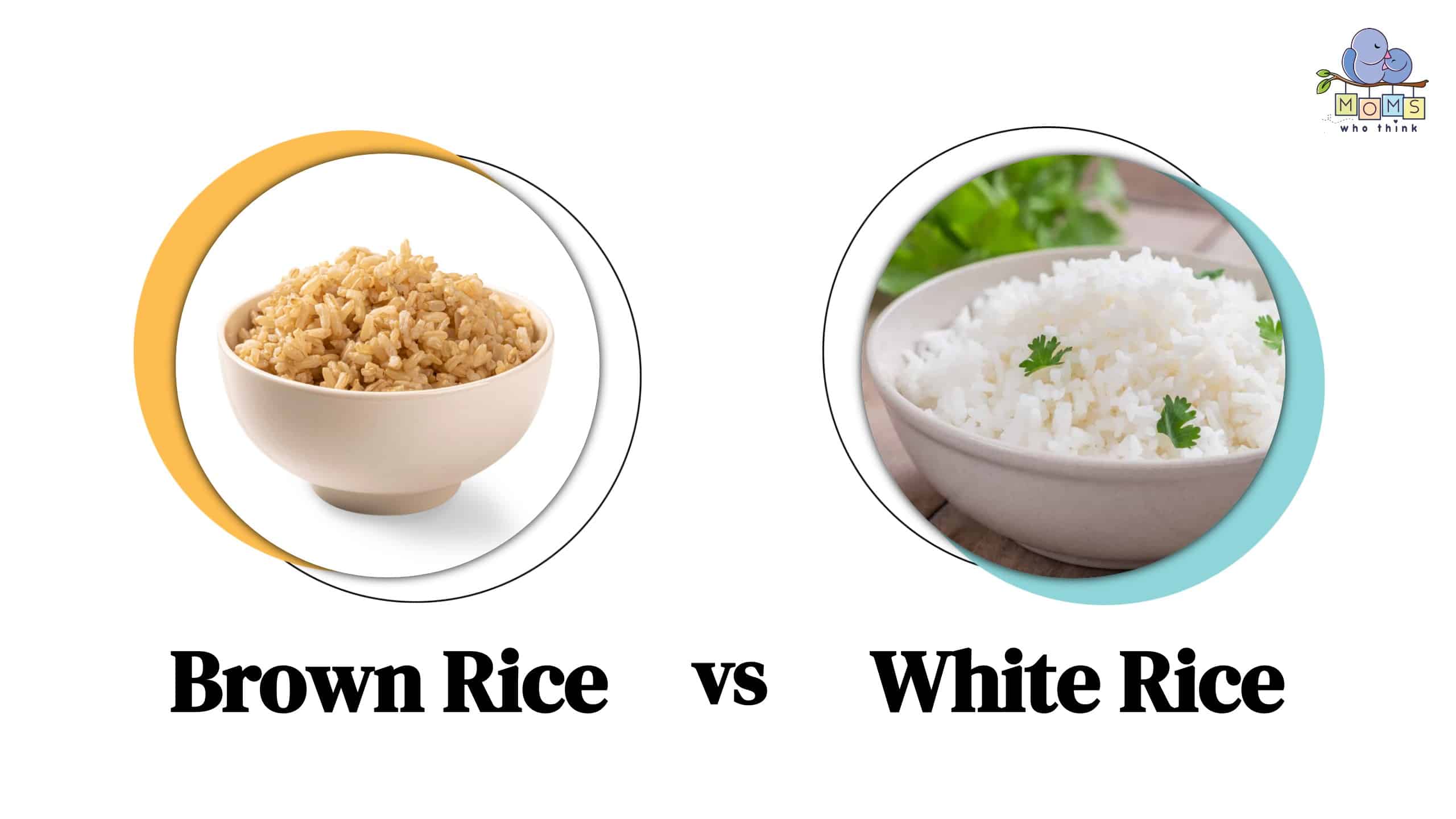Get ready for an incredible clash while we behold the grainy battle of Brown Rice vs. White Rice—a battle that will leave you hungry for more information!
For countless years, rice has been a mainstay of the human diet. Rice is a staple food for more than fifty percent of the globe's population. There are many different varieties of rice. However, they are generally classified by their grain shape (long or short grain) and color (white or brown).
Brown rice and white rice are the two frontrunners in the grain duel. These culinary titans may appear to be similar at first glance. However, their differences transcend far past their hue. Brown rice has more nutrients than white rice, but both can provide health advantages when taken as part of a balanced diet. Rice is largely made up of carbs, with just minimal amounts of protein and nearly little fat.
Keep on reading to learn more about their difference!
Brown Rice vs. White Rice: What is the Difference?
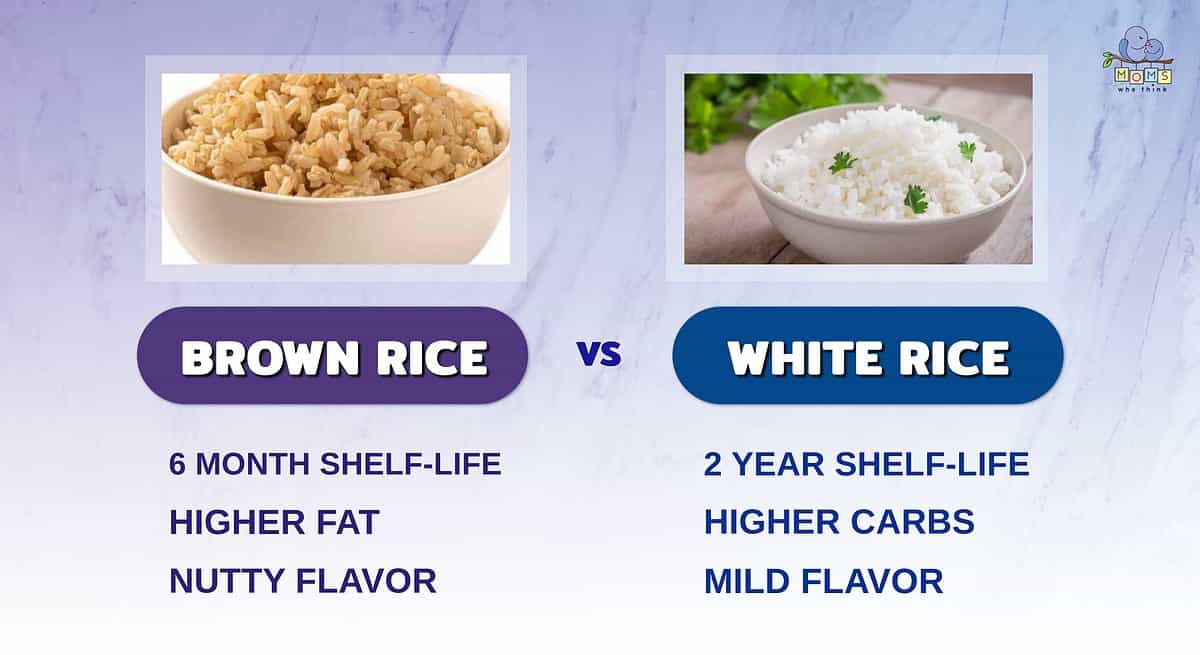
Beyond their appearance and flavor, brown rice and white rice are actually very distinct from one other. Here are some of the differences you should take note of between these two beloved grains:
Shelf life
Brown rice lasts for up to 6 months when stored at room temperature, whereas dry white rice has a shelf life of up to 2 years. Brown rice can degrade more quickly than white rice because it contains a little bit more fat from the germ's essential oils. When kept in a tightly sealed jar in the freezer or fridge, the oil-rich bran layer can survive up to a year. Though, many people still prefer white rice since most Asians who live in poverty lack home refrigerators.
Nutrients
You can always include all varieties of rice in a balanced diet, but whole-grain varieties such as brown, black, or red rice have been shown to be the most effective for losing weight. White rice offers less fiber than brown rice. Brown rice, as previously stated, has both the germ and the bran, thus maintaining its nutrients. These bran and germ provide nutrients to brown rice that white rice lacks, notably dietary fiber, fat, and amino acids, which keep your body full and help improve blood sugar regulation.
Flavor and Texture
In comparison to white rice, brown rice has a chewier and nuttier flavor. While brown rice has a richer, nuttier flavor that goes well with more stern flavors like smoke-cured salmon, ginger, and soy sauce, white rice has a softer and milder flavor. The concentration and kind of aromatic substances and fatty acids in various types of brown rice also influence its distinct flavor and smell.
Cost
Manufacturing white rice comes on a bigger commercial scale than brown rice simply because of its greater demand. As a result, brown rice seems to be an expensive product, driving up its price. Additionally, brown rice displays a lower shelf-life than white rice because of the small quantity of oil in the bran layer. Because more resources are required to maintain the quality of brown rice during shipping and storage, brown rice becomes more expensive.
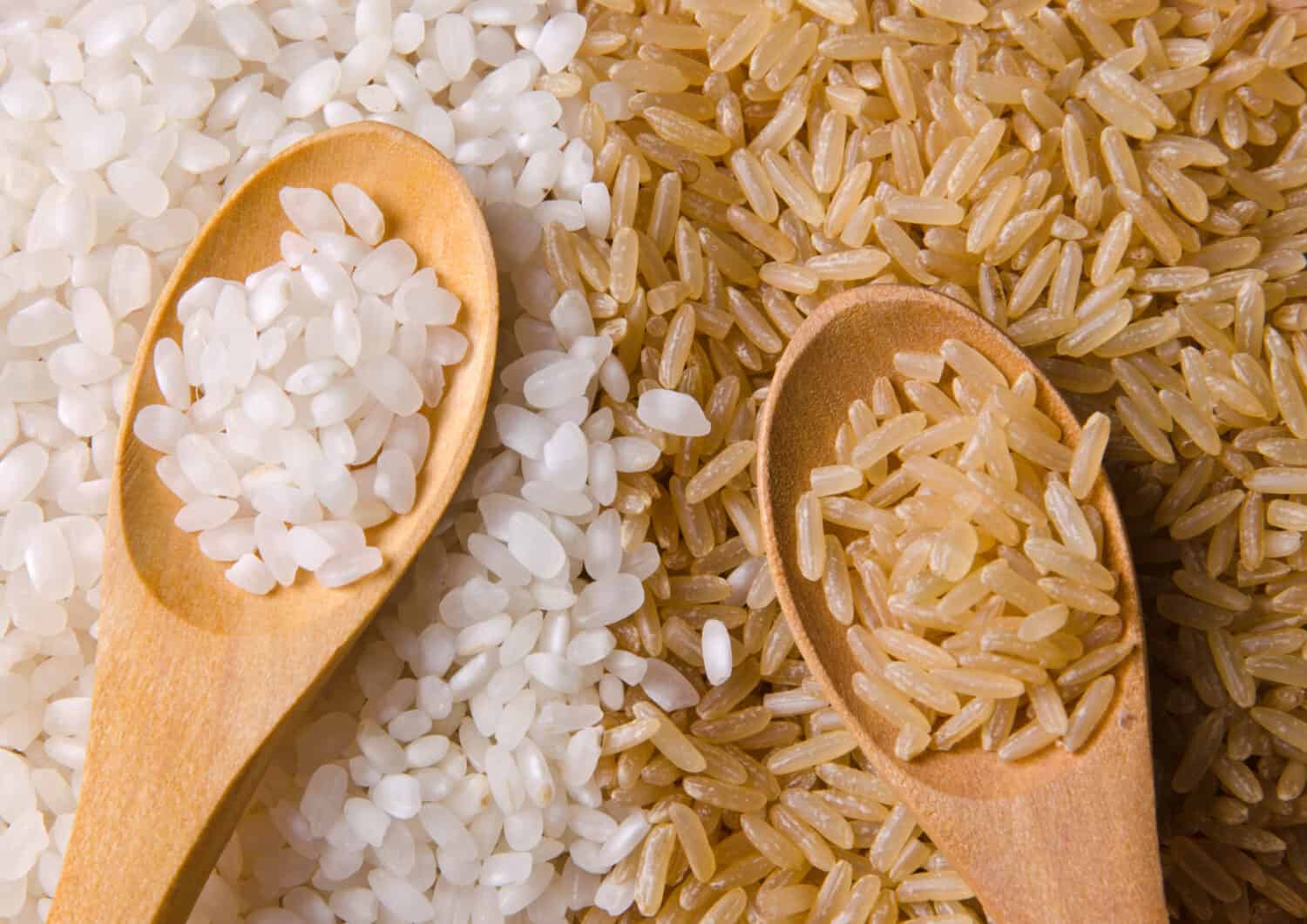
Brown rice lasts for up to 6 months when stored at room temperature, whereas dry white rice has a shelf life of up to 2 years.
©Iasmina Calinciuc/Shutterstock.com
Cooking time
Brown rice is a nutritious substitute for white rice. However, it requires some more time to cook than white rice. This is because brown rice has bran layers and has undergone less processing, which has had these layers removed. White rice has to cook for 15 minutes and then sit for 5 minutes, including the time needed to boil the water on the stove and finish steaming the rice. On the other hand, most brown rice packages would advise you to cook it for a longer period of time than white rice, which is approximately 30-45 minutes.
Glycemic Index
Refined carbs, such as white rice, are associated with a high Glycemic Index, which produces blood sugar surges that raise the likelihood of developing diabetes. Low Glycemic Index foods, such as brown rice, are absorbed less quickly, resulting in a smaller and lighter fluctuation in blood sugar levels.
Brown Rice vs. White Rice: Nutritional Value
Brown rice and white rice offer distinct nutritional values. Let's explore their differences.
Brown rice is whole grain rice that keeps the bran and germ layers, which are rich in fiber, vitamins, and minerals. It provides more dietary fiber than white rice, promoting better digestion, satiety, and stable blood sugar levels. Brown rice is also a good source of magnesium, phosphorus, and B vitamins like thiamin, niacin, and vitamin B6.
In contrast, white rice goes through a milling process that removes the bran and germ, resulting in a more refined product. While it still provides carbohydrates for energy, white rice has less fiber compared to brown rice. It often gets enriched with iron, niacin, thiamin, and folate to make up for some lost nutrients during processing. However, it lacks the natural fiber, vitamins, and minerals found in brown rice.
Calorie-wise, both brown rice and white rice are similar, providing around 200 calories per cooked cup. However, their impact on blood sugar levels differs. Brown rice has a lower glycemic index than white rice, meaning it digests and absorbs more slowly, resulting in a steadier rise in blood sugar.
For dietary preferences and health conditions, brown rice is generally considered healthier due to its higher fiber and nutrient content. It benefits individuals aiming to manage weight, improve digestion, or regulate blood sugar levels. White rice may be preferred by those with digestive issues or needing a quick energy source.
In conclusion, brown rice is more nutritious, offering more fiber, vitamins, and minerals compared to white rice. When making choices, consider personal dietary needs and preferences. Including whole grains like brown rice contributes to a well-rounded, nutrient-rich diet.
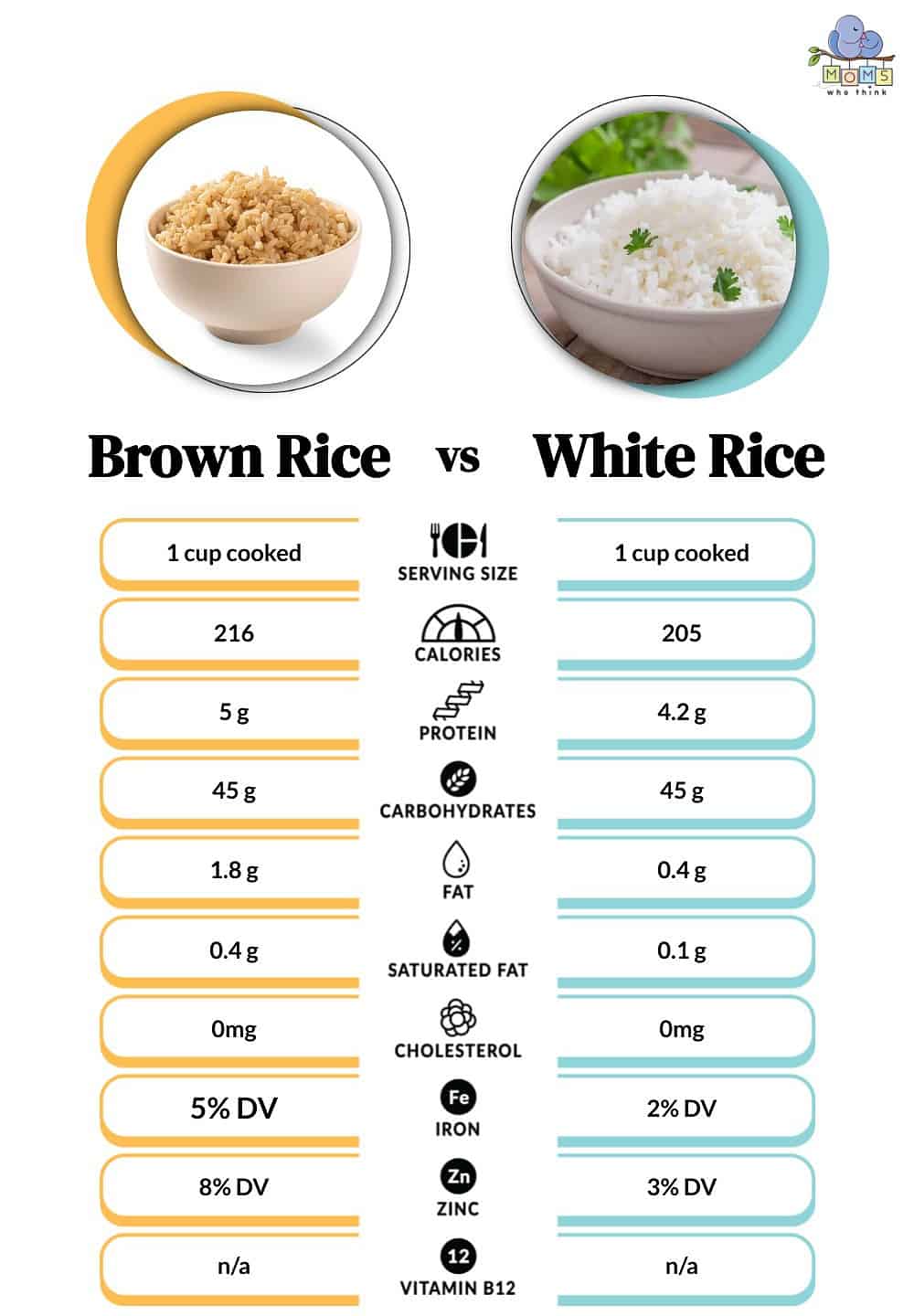
©
What is White Rice?
White rice is a starchy grain that is an integral element for over fifty percent of the global population, owing to its versatility, accessibility, and ability to adjust to any dish or spice.
White rice is also a brown rice that has had its hull, bran, and germ extracted away. Manufacturers polish this rice to extend its shelf life because the bran carries a small quantity of oil that might go bad. Although, this procedure depletes the rice of vital nutrients. White rice is enriched with vitamins to compensate for this. The rice is polished after milling (hulling), which produces a seed that is radiant, white, and glossy—making it more appealing.
How to Cook White Rice
Here's how you can make the fluffiest white rice:
It's essential to thoroughly wash your rice grains, whichever way you cook them. Excess starch is removed in this manner. After rinsing, put a mixture of rice and salted water to a boil in a medium-sized pot (put 2 cups of water for every 1 cup of white rice.). Remember to Season the Water. A generous sprinkle of salt added to the cooking water can go quite a way toward balancing the flavor of the cooked rice. Once the water has boiled, reduce the heat to a gentle simmer (15-20 minutes) and put the lid back on. Then, once cooked, remove it from the fire and set aside for a few minutes to soak up any excess water. Using a rice spatula, or fork, fluff the rice until it is perfectly fluffy.
What is Brown Rice?
Brown rice, occasionally referred to as ‘cargo rice' since it was delivered on cargo ships from the far east of Europe, is a whole-grain rice that has had the inedible outer shell removed. It has grown into a popular grain, owing to the numerous health benefits it offers and its superiority to its more widely consumed relative, white rice. Brown rice retains the health-promoting and protecting bran and fiber. Brown rice has various health advantages since it retains the bran and germ, which are eliminated during the production of white rice.
How to Cook Brown Rice
Outstanding brown rice! It is best to go slowly and subtly. Although it does take a bit longer to prepare than white rice, it is not any more difficult.
First, rinse the rice thoroughly. This step helps remove extra starches on the surface of the rice. In a pot, mix a cup of brown rice with 2-3 cups of water or broth. Bring to a boil, then reduce the temperature and cover for 45 to 50 minutes. Turn off the heat once cooked. Before removing the lid and fluffing with a fork, allow the pot to rest for 10 minutes with the lid back on.
Health Benefits of Brown Rice
Brown rice is an excellent whole grain that is filled with a lot of beneficial nutrients.
- Brown rice is a beneficial grain that you should introduce to your diet to improve digestion. It contains dietary fiber, which may help regulate bowel motions while keeping you feeling full.
- Brown rice lowers the risk of cognitive impairment and neurodegenerative diseases. They are high in fiber, which lowers cholesterol levels, which has been shown to increase the risk of neurological illnesses.
- Brown rice is high in antioxidants (flavonoids and phenol chemicals), which protect our bodies from oxidative stress.
- Although your body naturally contains melatonin, if you struggle to obtain a decent night's sleep, you may make up for any deficiency by eating melatonin-rich foods like brown rice.
- Brown rice contains calcium and magnesium, which supports bone health.
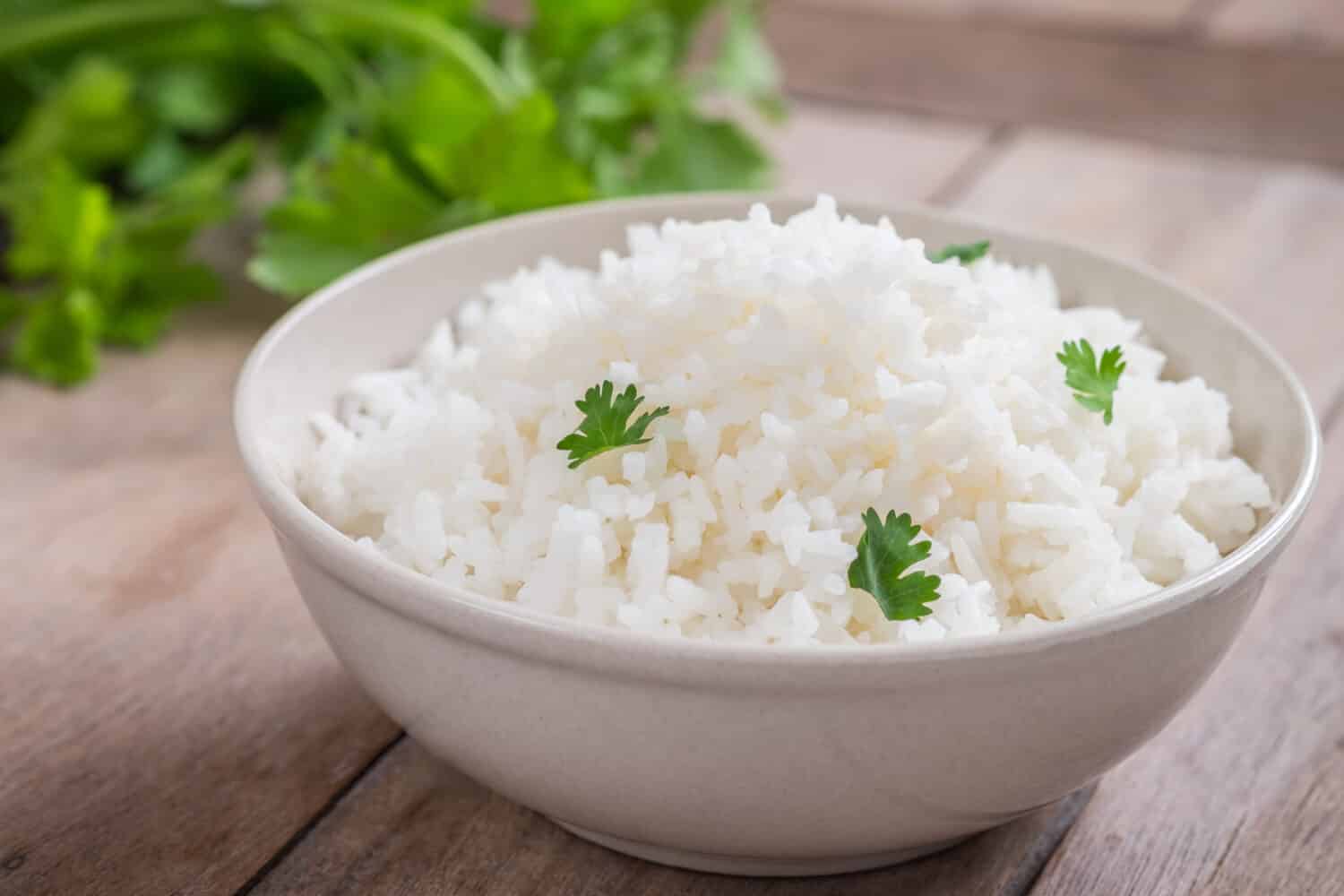
White rice has important nutrients, including magnesium, potassium, and vitamin D, that support a healthy immune system.
©Amarita/Shutterstock.com
Health Benefits of White Rice
Contrary to popular belief, white rice might not be as bad as you think it is. When used moderately and in combination with other nutrient-dense foods, it may be a part of a nutritious and balanced diet.
- Rice is a carbohydrate-rich meal that gives a lot of energy rapidly. For this reason, when it comes to needing a good energy provider, athletes themselves choose white rice over brown rice.
- Resistant starch can generate certain fatty acids that help the colon stay strong. These types of fatty acids can additionally decrease the likelihood of colon cancer.
- White rice has important nutrients, including magnesium, potassium, and vitamin D, that support a healthy immune system.
- White rice, according to Chou, also contains B vitamins, which are essential for brain function. According to studies, B vitamins help to promote mental wellness and lowers brain inflammation over time.
Conclusion
Overall, brown rice is more nutrient-dense than white rice. It has more fiber, magnesium, and other nutrients than white rice, which is chemically enhanced with vitamins. There's nothing wrong with choosing either of the two. Just make sure to carefully look at what kind of rice you like and what best fits your lifestyle.
Any type of rice you include in your diet will have tons of health benefits, and focusing on the enjoyment of your meals is an effective way to improve your relationship with foods and your health.
Whatever kind we choose, including nutritious grains in our meals may help us live a life that is both nutritious and balanced. Therefore, whether you choose the warm comfort of white rice or the earthy wholesomeness of brown rice, your goal is to adopt a broad and well-rounded approach to nutrition.
Try your hand at this delicious rice recipe:
Print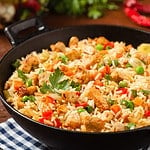
Tex-Mex Fried Rice
- Yield: 4 servings
Ingredients
1 pound boneless skinless chicken breasts, cubed
1 package (10 ounces) frozen corn, thawed
1 medium green pepper, chopped
1 medium onion, chopped
2 teaspoons canola oil
1 cup chicken broth
1 cup medium salsa
1 teaspoon chili powder
¼ teaspoon cayenne pepper
½ teaspoon salt
1½ cups uncooked Minute Instant White Rice
½ cup shredded reduced fat cheddar cheese
Instructions
1. In a large nonstick frying pan, sauté the chicken, corn, green pepper and onion in oil until chicken juices run clear (about 7 to 9 minutes).
2. Stir in the broth, salsa, chili powder, cayenne pepper and salt; bring to a boil.
3. Add the rice. Cover and remove from the heat; let stand for 5 minutes.
4. Fluff mixture with a fork. Sprinkle with cheese; cover and let stand for 3 minutes or until cheese is melted.
Nutrition
- Serving Size: 1½ cups
- Calories: 417
- Sodium: 659mg
- Fat: 9g
- Saturated Fat: 3g
- Carbohydrates: 48g
- Fiber: 4.5g
- Protein: 32g
- Cholesterol: 72mg
